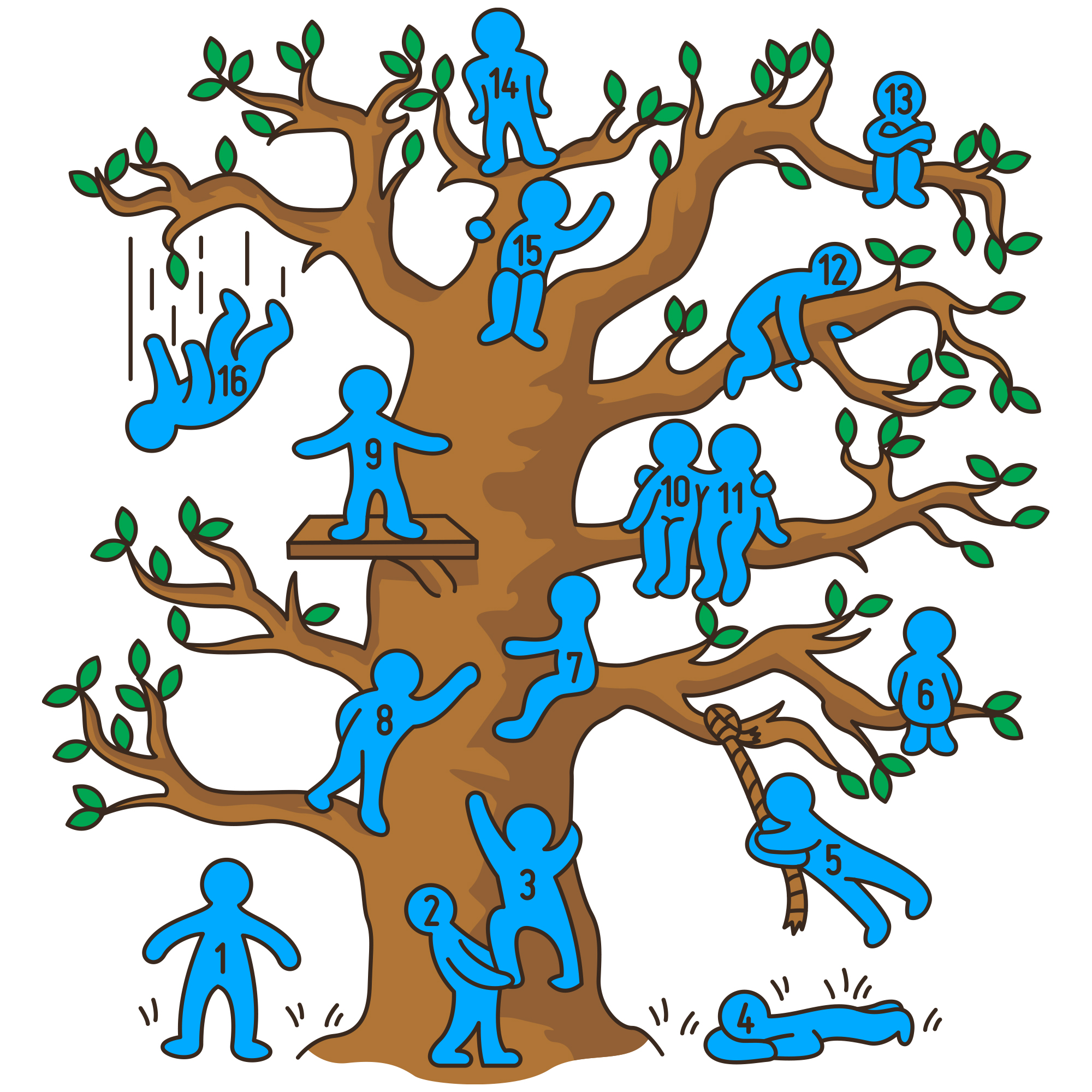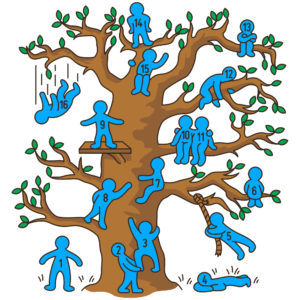Resources to Respond to Tragedy and Violence

All educators are civics teachers. Teachers send messages to students about power, justice, and representation by the content we select, the way we engage student voice, the norms we employ, and the stories included in our classroom. We have a responsibility to prioritize our students’ lived experiences, putting Maslow before Bloom, to inform the essential questions we address in our curriculum. When violence or tragedy occurs, classrooms provide a safe venue for students to process, ask questions and be given context to understand current events as they happen.
While current events unfold, it is not the time to debate policy. Educators will not have all of the answers to the questions students pose. Teachers can create a classroom space where we can be present, listen, and create a safe environment for our students to do the same.
Start with Reflection
Your students may be wrestling with a range of emotions. We cannot assume what students are feeling or their perceptions of unfolding events. The tools below can be used to check in and see where students are. After using the tool that works for you, collect student responses, and display them in a chart or word cloud. Discuss the patterns, trends, and outliers to build empathy and awareness of self and others in the class. Engage students in a proactive conversation about what can be done to address past issues and the question: Where do we go from here?
- Have students individually complete the following sentence, “When I think about (insert event here), I feel____ because______.”
- Use some of the Visible Thinking Routines from Project Zero:
- Compass Point Reflection has students identify something that is worrisome, exciting, a “need to know,” and a suggestion for moving forward.
- Color, Symbol, Image asks students to share and discuss a color, a symbol, and an image that represents how they are feeling.
- 3-2-1 Bridge can be used to have students identify 3 thoughts they have about the current event, 2 questions they have, and 1 idea they have for moving forward.
- Claim, Support, Question prompts students to make a claim about the event, support it with evidence, and a question they still have.
- Have students identify where they are on this Blob Tree, explain their placement, and the questions they have from their position on the tree. This tool is especially user-friendly for younger students.

Revisit Norms for Discussion
One of the essential questions tackled in any classroom is, “How shall we live together?” Revisit your classroom norms for discussion. What does productive dialogue look like, feel like, and sound like? Here are a few tools to help to recalibrate or establish these norms.
- Class Contracting from Facing History and Ourselves helps students discuss expectations and norms of how class members will treat one another face to face or online.
- This one-page explainer of Dialogue vs. Debate from the U.S. Institute of Peace provides students with a vision of productive dialogue.
- Learning for Justice shares the importance of creating a Classroom Culture to foster respect for oneself and others and uses What is your FRAME? to encourage students to reflect on their own background and enlarge their perspectives.
Have a Structure for Your Conversation
Great classroom discussions, like great lesson plans, rarely “happen.” They take time and intention. Here are strategies to consider employing to help students share their reflections and address the essential question, “Where do we go from here?”
- Socratic Seminar is a protocol designed to help students dive into a common text or process a common experience to promote understanding of multiple perspectives, deepen inquiry, and create an understanding of the lived experiences of others. Support the seminar with an article you have curated about the event or with ideas students created in one of the reflection activities above. This guide from Facing History and Ourselves provides an overview of the strategy in traditional classrooms and there is also a remote learning edition from the Illinois Civics Hub Remote Learning Toolkit.
- Big Paper Talk allows students to reflect on a common text or experience and silently share their thoughts before engaging in a larger conversation. There is both a face-to-face and remote learning edition from Facing History and Ourselves.
- Hexagonal Thinking is a tool that can be used in the traditional or remote classroom. Students use hexagons (physical or digital) to personally reflect on a prompt and then bring the hexagons to the larger group to make a hexagonal map, illustrating connections between participants’ ideas. Students work together to connect all of the ideas, deliberate how the hexagons should be shifted, question to understand, and create new hexagons if needed to make connections. You can find out more about this strategy from the Cult of Pedagogy blog or Vision in Practice.
- Learn to Listen, Listen to Learn from Facing History and Ourselves has students journal, share, and listen, then discuss ideas in small groups before moving to whole class group sharing and discussion. This protocol concludes with a reflective journal entry. Students focus on listening to understand rather than to respond.
Words Matter
Classrooms often work to simulate the “real world” for students. However, much of the debate around current events happening outside of the classroom can be hyperbolic, misinformed, and often hurtful. Explicitly teaching and modeling “how we should live together” in the classroom is an important step to building “a more perfect union” outside of the classroom.
- When speaking of the people involved, use formal language. Use terms like President Trump and President Biden rather than terms like “Trump” and “Uncle Joe.” Avoid the language of othering. As iCivics Chief Education Officer Emma Humphries explained in an opinion piece for The Hechinger Report, “Vocabulary can be divisive, so give some thought to class norms for talking about the parties and candidates. For example, say the Republican Party and the Democratic Party, not the Republicans or the Democrats.”
- Give students tools like these sentence starters from Teach Thought and these transition statements from Illinois Civics Instructional Coach Candace Fikis to support civil discussion. This is especially useful for ELL students.
- Do not allow dehumanizing language. To quote activist and writer James Baldwin, “We can disagree and still love each other unless your disagreement is rooted in my oppression and denial of my humanity and right to exist.” Learning for Justice’s Let’s Talk resource has specific advice on how to handle inappropriate language.
Model Media Literacy
Speculation and rumors may abound as events unfold. You and your students do not have to navigate the information landscape alone.
- The News Literacy Project (NLP) has a weekly newsletter called The Sift that explores timely examples of misinformation, addresses freedom of the press, and discusses social media trends and issues with activities for use in the classroom. NLP offers other tools to engage in responsible news consumption.
- The Stanford History Education Project’s Civic Online Reasoning platform has lessons to help students learn to consume, engage with, and produce information.
Seek out Professional Learning Networks to Support YOU during difficult times.
YOU need ongoing support to help process current events and crowdsource timely and relevant resources to use in your classroom. Free professional learning networks:
- The Illinois Civics Hub has ongoing blogs, newsletters and resources to support teachers. The Hub also shares resources via Twitter (@IL_CivicsHub, #CivicsInTheMiddle) and a Facebook group.
- The Social Studies Chat Network (#sschat) has weekly Twitter chats on Monday from 6-7:00 CT to support educators. Find out more and peruse their archives of previous discussions to respond to challenging events.
- PBS NewsHour Extra has special webinars to support teachers in difficult times.
The National Child Traumatic Stress Network has developed resources to help children, families, educators, and communities navigate what they are seeing and hearing, acknowledge their feelings, and find ways to cope together. These resources include:
- Talking to Children about the Shooting
- Helping Youth After a Community Trauma: Tips for Educators (En Español)
- Talking to Children: When Scary Things Happen (En Español)
- Talking to Teens about Violence (En Español)
- Tips for Talking to Students about Violence
- Coping After Mass Violence: For Adults
- For Teens: Coping After Mass Violence(En Español)
- Helping School-Age Children with Traumatic Grief: Tips for Caregivers (En Español)
- Helping Teens with Traumatic Grief: Tips for Caregivers(En Español)
- Helping Young Children with Traumatic Grief: Tips for Caregivers (En Español)
- Guiding Adults in Talking to Children about Death and Attending Services
- After a Crisis: Helping Young Children Heal
- Age-Related Reactions to a Traumatic Event
- Once I Was Very Very Scared – children’s book for young children
- After the Injury—website for families with injured children
- Health Care Toolbox—website for pediatric health providers working with injured children
- Pause-Reset-Nourish (PRN) to Promote Wellbeing (En Español) (for responders)
Psychological First Aid
The NCTSN also has resources for responders on Psychological First Aid (PFA; En Español). PFA is an early intervention to support children, adolescents, adults, and families impacted by these types of events. PFA Mobile and the PFA Wallet Card (En Español) provide a quick reminder of the core actions. The PFA online training course is also available on the NCTSN Learning Center.
Additional PFA resources for schools include:
- Psychological First Aid for Schools (PFA-S) – Field operations guide
- Providing PFA-S: For Health-Related Professionals – handout
- Providing PFA-S: For Principals and Administrators – handout
- Providing PFA-S: For School Support Staff – handout
- Providing PFA-S: For Teachers – handout
From the National Mass Violence and Victimization Resource Center
- Transcend (mobile app to assist with recovery after mass violence)
- Rebuild your Community: Resources for Community Leaders
- Media Guidelines for Homicide Family Survivors
- Timeline of Activities to Promote Mental Health Recovery
- Self-Help: Resources for Survivors
- E-learning Courses: Training for Clinicians
- Resources for Victim Assistance Professionals
From the Center for the Study of Traumatic Stress at the Uniformed Services University
- Grief Leadership: Leadership in the Wake of Tragedy
- Leadership Communication: Anticipating and Responding to Stressful Events
- Coping with Stress Following a Mass Shooting
Disaster Helpline: SAMHSA has a Disaster Distress Helpline – call or text 1-800-985-5990 (for Spanish, press “2”) to be connected to a trained counselor 24/7/365.
Powerful Resources for Teaching Through Trauma or Tragedy: By The SHARE Team
More Resources to Help Students Process Current Events
- 10 ways to de-escalate political discussions with friends and family who disagree with you from CNN
- An age-by-age guide on how to talk about difficult topics with your children (Motherly and Common Sense Media)
- Caring for Students in the Wake of a Traumatic News Event from Ed Week.
- Fostering Civil Discourse: How Do We Talk About Issues That Matter? from Facing History and Ourselv
- Helping Children Cope with Frightening News (also in Spanish) from Child Mind Institute
- Helping Kids Navigate Scary News Stories from PBS Kids
- How to Speak Up Without Starting a Showdown from the News Literacy Project
- Political Polarization Explainer from Facing History and Ourselves
- Resources for talking to students about politics, civic engagement, and uncertainty from ASCD
- Talking to Children About Violence: Tips for Parents and Teachers (National Association of School Psychologists)
- Tough Conversation Tools from the After School Alliance
- When Something Scary Happens from PBS Kids
